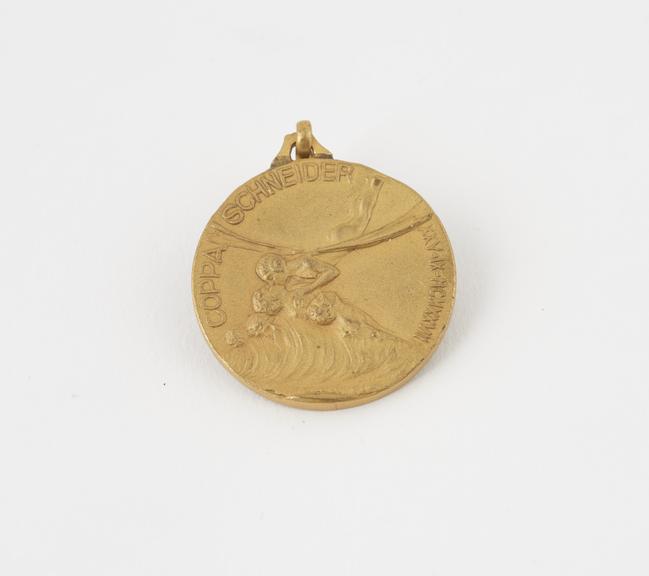Even though I’ve worked at the Science Museum for eight years, I still find the Flight Gallery stunning. It reminds me of my childhood bedroom ceiling, with one big difference: I had plastic kits hanging in dogfight freeze frames, the Flight Gallery has the real things!
One thing that really sticks out is this crab encrusted trophy with the plump-bottom angel (supposed to represent the Spirit of Flight kissing the waves).
It’s the Schneider Trophy, which was offered from 1913 to encourage the development of seaplanes.

The history of the trophy is packed with colourful stories. In 1919, Italy was the only team to get their plane up and around the course but they didn’t win, because due to the fog the panel couldn’t be sure that they’d completed the course.
Then in 1929, a broken piston head was found during a last-minute check on the British plane. They rallied up Rolls Royce engineers in the area but rumour has it that at that late hour the only available engineers were found in the local pub…
It flew the next day and won.
The British Government was slow to support the entries, but some colourful individuals came forward with the money. In 1922, Fanny Huston, an East End musical hall singer who had had a string of extremely wealthy husbands was a major investor.
The Supermarine S6B seaplane won this trophy for Great Britain in 1931 and is also in the Flight Gallery. It reached a top speed of 340mph and as it was the third consecutive win for the Brits we got to keep the trophy, bringing this bit of history to an end.
Incredibly, the first race for the Schneider Trophy was held only ten years after the first-ever flight. The top speed then was 45.75mph and within just 19 years that had increased to 340mph.